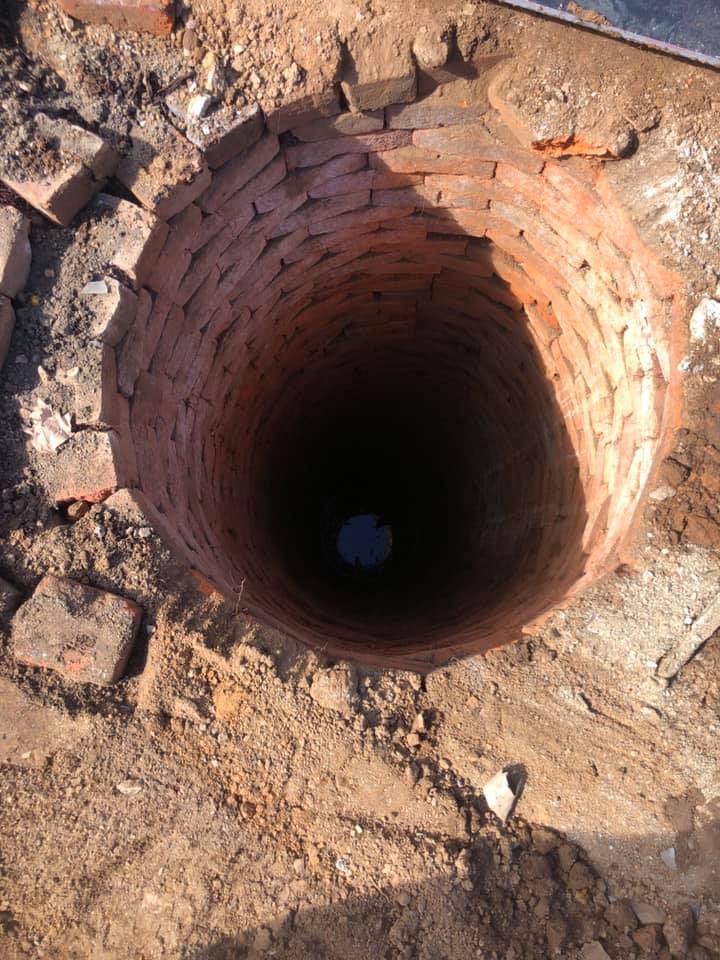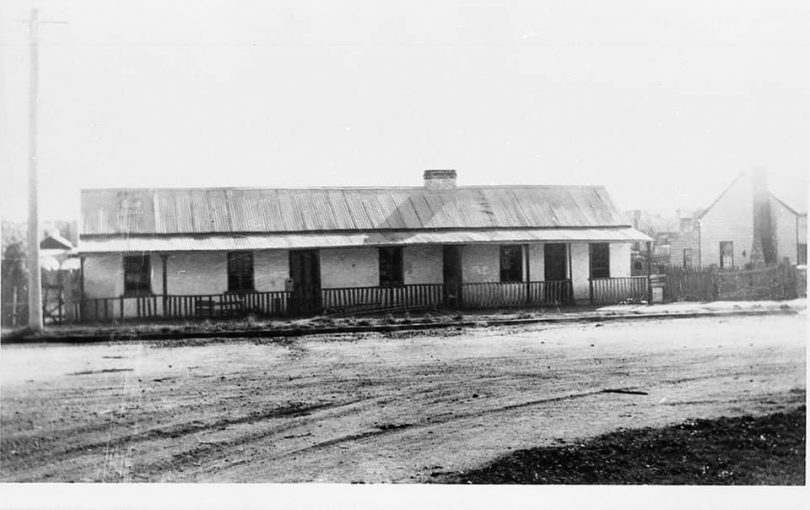
A well has been unearthed in Queanbeyan that is estimated to be 150 years old. Photo: Gillian Kelly and Brendan O’Keefe.
An old well has been unearthed in Queanbeyan during excavations on the new precinct for Queanbeyan-Palerang Regional Council (QPRC).
Bulldozers had been preparing the site on the intersection of Crawford Street and Lowe Street when they struck a man-made ring of bricks, dating back about 150 years.
Buried beneath the previous structure, the well is approximately nine metres deep and in excellent condition.
At this early stage, it’s thought it was likely part of the Myers Aerated Water and Cordial Factory that stood on the site from 1874 until around 1950.
QPRC Mayor Tim Overall has recommended the well be protected and conserved for its “historic, aesthetic and technical significance” as part of Queanbeyan’s significant heritage.
A report on how this can best be achieved will be presented at the next meeting of the QPRC Heritage Advisory Committee.
Queanbeyan was officially proclaimed a township in 1838, with a population of 50. The area is ripe with history and heritage, not to mention plenty of old cordial bottles.

The Myers Aerated Water and Cordial Factory that operated in Queanbeyan from 1874 until around 1950. Photo: Queanbeyan-Palerang Regional Council Library.
Not much is known about the Myers Aerated Water and Cordial Factory, but several other cordial factories called the Queanbeyan region home during the late 19th and early 20th centuries.
William Pike, state judge and twice mayor of Queanbeyan, ran a cordial business near his home at Trinculo Place, overlooking Queanbeyan River, until it burnt to the ground in 1917.
Pike’s obituary states he was born in 1851 in Tuggeranong (now Wanniassa) before coming to live and work in Queanbeyan, initially as a butcher.
“He afterwards commenced business as a cordial and aerated water manufacturer, and later started business in the same line at Captain’s Flat, where he won and held the respect of the whole community,” it reads.
Meanwhile, across the border in the new Federal Capital Territory, the sale of alcohol was banned from 1910 to 1928. People wanting a tipple had to either sneak bottles across the border, or head across to one of Queanbeyan’s 16 public houses.
But there was no limit on the production of cordial in the Territory, and in 1926, TJ Sheekey built its first cordial and ice-making factory on a block of land that is now Mort Street in Braddon.
But even this ended up in Queanbeyan. After being sold and passed through another’s hands, the business was bought by the Commonwealth Cordial Company and a new factory established on Derrima Road in Queanbeyan.
The new Queanbeyan Civic and Cultural Precinct (QCCP) is currently being constructed on the site of the former QPRC administration building at 257 Crawford Street, and into the Lowe Street car park, at a cost of $74 million.
The development will have a strong focus on community and cultural purposes, with more than 40 per cent of the precinct comprising community spaces, gallery linkages to The Q and Bicentennial Hall, new basement parking and public domain.
The QCCP includes a head office for QPRC staff, the council library, conference meeting rooms, and lettable space for NSW Government agencies, commercial offices and a smart hub.
The precinct is due for completion in early 2023.












